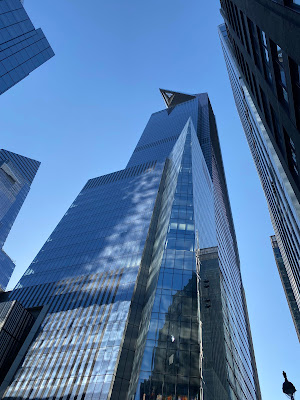N.Y. Today: Emissions standards that buildings must hit
In 2019, the City Council enacted a package of bills to reduce the greenhouse gas emissions that cause climate change, including one bill that became Local Law 97 and set limits for emissions from large buildings. Building owners are scrambling to figure out how to pay for upgrades to comply. I asked our writer Jane Margolies to explain. |
There’s a series of deadlines. You wrote that nearly all of the 50,000 buildings subject to this law will meet the first one, in 2024. What about the second deadline, in 2030? How hard will it be for building owners to comply with the standards that take effect then? What kind of work will they have to do? |
It’s going to be much, much harder to meet the standards in 2030. For 2024, most buildings that are running reasonably efficiently — buildings that are well insulated, have LED lighting, have heating systems tuned up and don’t have old, rattly, single-pane windows — are going to hit the standards. It’s pretty low-hanging fruit. |
For 2030, it could take not just tuning up heating systems that run on oil or gas but replacing them with systems that run on electricity. These can be expensive projects. New buildings can be designed with the requirements of Local Law 97 in mind, but it can be difficult to do retrofits in older buildings. |
How steep are the fines? |
It all depends on what your emissions are. The law has a specific equation for calculating fines based on how much a building is over its limit. The owner of the Bank of America building, once the greenest around, expects to pay $2.4 million a year in 2024. |
What about apartment buildings? Aren’t they subject to the same law? |
Yes, and they will actually have the hardest time complying. The majority of the buildings that look like they won’t make the 2024 deadlines are apartment buildings. Some of these are the ones with the rattly old windows. Many still have old oil-burning furnaces. Two garden apartment complexes in Queens that are faced with the prospect of replacing all their furnaces have brought a lawsuit against the city over Local Law 97.
|



Comments
Post a Comment